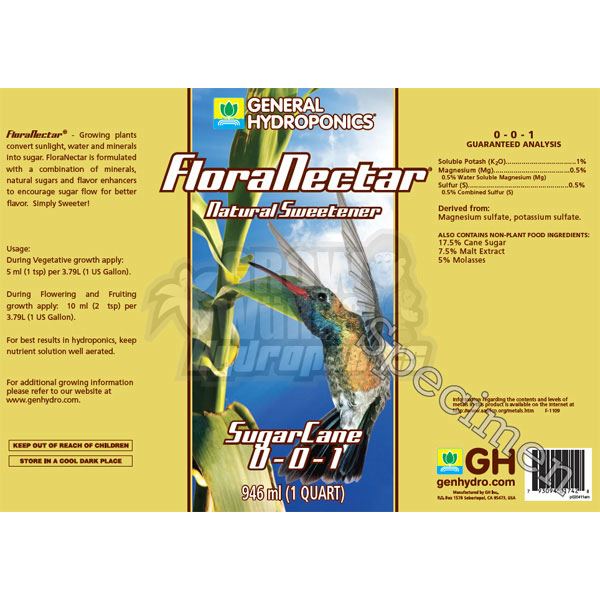GanjaGardener
- 848
- 63
What I like about the approach in this thread is the focus on plant systems and the observational orientation. I respect and am full throttle w/ the microbes, but I'm a naturalist at heart.
I'm here to modify and improve my grow culture like most everybody else here. If my observations or info differ from your own, just take it w/ a grain of salt. If I had it all together (or thought that I did), I probably wouldn't be spending as much time here as I do. lol
When I moved to full cycle indoors I wasn’t happy w/ my aromatics either. The buds had the look, and while not hitting it’s ceiling, (the low/moderate terpene activity being the indicator), the buzz strength was within the 10%-15% range which is indiscernible to most. So why wasn’t I getting the dank?
Nutes
I grew outdoors for 20 years before going full cycle indoors and it took some time to adjust and ‘see’ the plants in, literally, a new light. I had moved indoors, but as one might expect, I was still looking at the plants w/ an outdoor eye- most notably their foliar color as they moved through the cycles. In my case, w/ the growing program I was using at the time, this meant that the plants weren’t as green as they should have been which, in turn, translated to a lack of N throughout but, particularly, during pre-early flower. I had been (overly) influenced by a couple of posts and was flushing a day or two after flipping to flush the N out- supposedly for sweeter buds at the finish. Thankfully, I got off of that kick soon after starting, but my eyes were still not trained to the indoor culture and I continued to underdo the N.
- My guess is that giving the plant’s a boost of N before flipping and following up w/ light-moderate N feedings 2-4 weeks into flower, (depending upon strain and what the individual plant is telling me) is the single most important adjustment I made to improve terpene production.
- Foliar feeding w/ a high P guano, (fruit eating bats) before the buds thicken up, (usually up to wk 4 flr), seems to help, although I can’t prove it.
- Carbos,- not carbo (over)loading (ie 1T molasses/ 5 gal)- and some vitamins during late watering.
- I taper off the nutes beginning and @ roughly 20-17 das, use molasses/vits only from 14-10 das and water only from 10 2 go and on.
Flush
- We don’t full (3x) flush anymore. A full flush during the last 3 days stops or sets back (a virtual stop @ w/ 10 days 2 go) plant processes/uptake. If the container goes “dry”a couple of times during the last 10 days, it’s still transpiring.
- I read ec going in and the run-off coming out throughout the course of a grow. salts are salts- organic or otherwise, and they can and do build up in a container of soil over the course of a grow. We use Alien Seeds 3 day, dry-water-nute feeding cycle, perform a 1x flush 2-3 times during flower including one @ 5 or 6 days before harvest and don’t get salt build-up.
- I flush w/ RO’d water w/o any pH adjustments. VelvetElvis’ approach of stopping uptake by going w/ out of the plants pH uptake range is interesting and I’d like to learn more. I can see where a 9.0/ or 4.0 would stop the plant from uptaking nutes. My question is will the plant systems still be operative enough to feed on it’s stores in an extreme pH?
Dry/Cure
- Fungal spores are everywhere and unless your room is in a vacumn, they’re floating around in all of your rooms. I pull yellow leaves, because dead tissue is the first place that mold/dry rot/botrytis will colonize. I leave all other leaves on to prolong the dry and to protect the trichs. Once the plant is chopped, transpiration and translocation cease.
- Curing has added zest to more than one weak smelling bud. 30 days can make magic, but I wouldn't depend upon it..
- OG Raskal’s curing tutorial, (which is on this site) is dead on, IMHO.
This scratches the surface.
I'm here to modify and improve my grow culture like most everybody else here. If my observations or info differ from your own, just take it w/ a grain of salt. If I had it all together (or thought that I did), I probably wouldn't be spending as much time here as I do. lol
When I moved to full cycle indoors I wasn’t happy w/ my aromatics either. The buds had the look, and while not hitting it’s ceiling, (the low/moderate terpene activity being the indicator), the buzz strength was within the 10%-15% range which is indiscernible to most. So why wasn’t I getting the dank?
Nutes
I grew outdoors for 20 years before going full cycle indoors and it took some time to adjust and ‘see’ the plants in, literally, a new light. I had moved indoors, but as one might expect, I was still looking at the plants w/ an outdoor eye- most notably their foliar color as they moved through the cycles. In my case, w/ the growing program I was using at the time, this meant that the plants weren’t as green as they should have been which, in turn, translated to a lack of N throughout but, particularly, during pre-early flower. I had been (overly) influenced by a couple of posts and was flushing a day or two after flipping to flush the N out- supposedly for sweeter buds at the finish. Thankfully, I got off of that kick soon after starting, but my eyes were still not trained to the indoor culture and I continued to underdo the N.
- My guess is that giving the plant’s a boost of N before flipping and following up w/ light-moderate N feedings 2-4 weeks into flower, (depending upon strain and what the individual plant is telling me) is the single most important adjustment I made to improve terpene production.
- Foliar feeding w/ a high P guano, (fruit eating bats) before the buds thicken up, (usually up to wk 4 flr), seems to help, although I can’t prove it.
- Carbos,- not carbo (over)loading (ie 1T molasses/ 5 gal)- and some vitamins during late watering.
- I taper off the nutes beginning and @ roughly 20-17 das, use molasses/vits only from 14-10 das and water only from 10 2 go and on.
Flush
- We don’t full (3x) flush anymore. A full flush during the last 3 days stops or sets back (a virtual stop @ w/ 10 days 2 go) plant processes/uptake. If the container goes “dry”a couple of times during the last 10 days, it’s still transpiring.
- I read ec going in and the run-off coming out throughout the course of a grow. salts are salts- organic or otherwise, and they can and do build up in a container of soil over the course of a grow. We use Alien Seeds 3 day, dry-water-nute feeding cycle, perform a 1x flush 2-3 times during flower including one @ 5 or 6 days before harvest and don’t get salt build-up.
- I flush w/ RO’d water w/o any pH adjustments. VelvetElvis’ approach of stopping uptake by going w/ out of the plants pH uptake range is interesting and I’d like to learn more. I can see where a 9.0/ or 4.0 would stop the plant from uptaking nutes. My question is will the plant systems still be operative enough to feed on it’s stores in an extreme pH?
Dry/Cure
- Fungal spores are everywhere and unless your room is in a vacumn, they’re floating around in all of your rooms. I pull yellow leaves, because dead tissue is the first place that mold/dry rot/botrytis will colonize. I leave all other leaves on to prolong the dry and to protect the trichs. Once the plant is chopped, transpiration and translocation cease.
- Curing has added zest to more than one weak smelling bud. 30 days can make magic, but I wouldn't depend upon it..
- OG Raskal’s curing tutorial, (which is on this site) is dead on, IMHO.
This scratches the surface.







